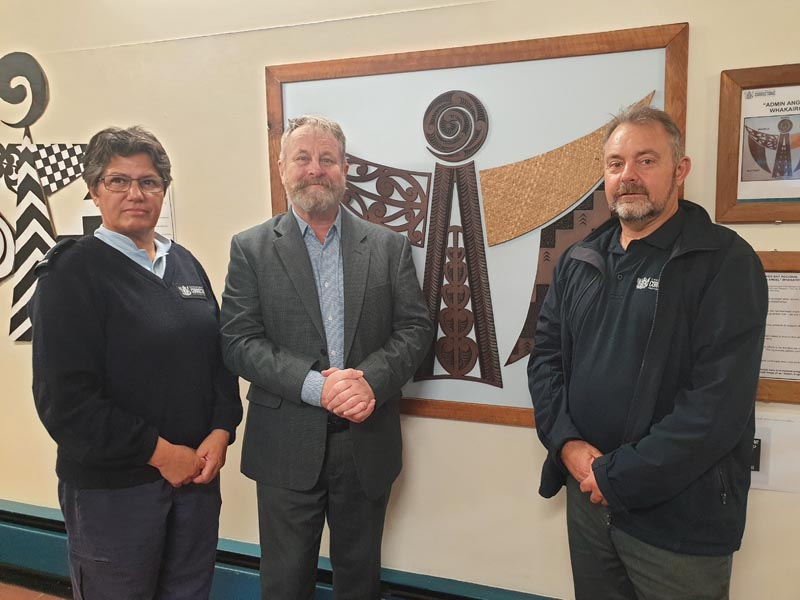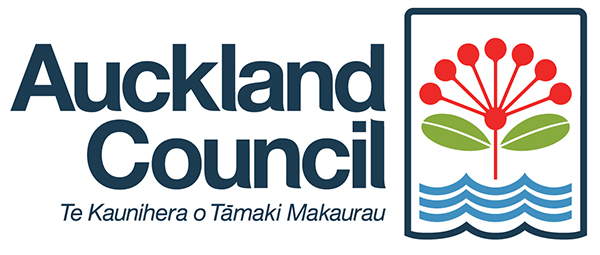Leonie Aben’s belief in the arts and culture as powerful tools supporting rehabilitation is based on a 32-year career working in prisons – mostly recently as General Manager of Manawatū Prison in Palmerston North.
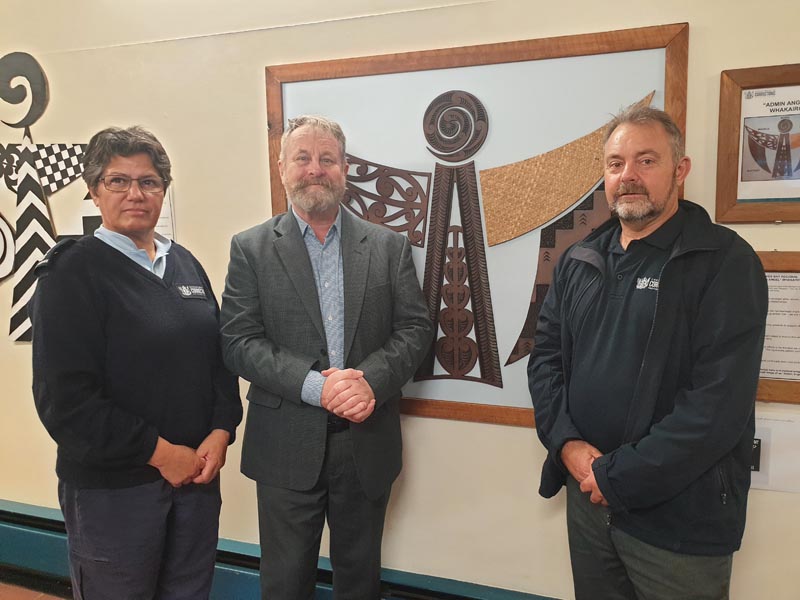 “Being involved in the arts unlocks potential, helps build self-esteem, and creates a real sense of pride and achievement,” Leonie says.
“Being involved in the arts unlocks potential, helps build self-esteem, and creates a real sense of pride and achievement,” Leonie says.
“Arts and cultural programmes also have a calming, therapeutic effect. If the men are singing waiata, performing kapa haka, playing music, or weaving or painting, it changes the atmosphere in the prison and makes it a safer place for everyone.”
Of Rongomaiwahine, Ngāti Takoto, Dutch and German descent, Leonie’s career began in 1993 at Mangaroa Prison – now known as Hawke’s Bay Regional Prison.
Over the years, she moved through frontline roles and up the ranks, working across Waikeria Prison and Auckland Prison, before returning to the Hawke’s Bay.
Impact of Te Tirohanga at Hawke's Bay prison
There, her work in Te Tirohanga (Māori focus unit) cemented her understanding of the transformative power of culture and creativity. As its Acting Prison Director, she received a Highly Commended citation in Māui Tikitiki a Taranga Award presented by Arts Access Aotearoa in 2020.
“I could see the positive difference that its cultural arts programmes were making. How they created a real sense of belonging and connectedness and inclusion – not just for Māori but for men from other cultures too.”
At the helm of Manawatū Prison since 2024, Leonie says she regularly sees the positive impact that arts and cultural programmes have on the men.
She tells the story of a group of men who participated in Te Ihu Waka. This week-long tikanga Māori motivational programme supports participants to understand their cultural identity, and is aimed at motivating them to change their behaviour and engage in rehabilitation programmes.
Arts and culture integral to motivational programme
The arts and culture are integral to the programme, Leonie says.
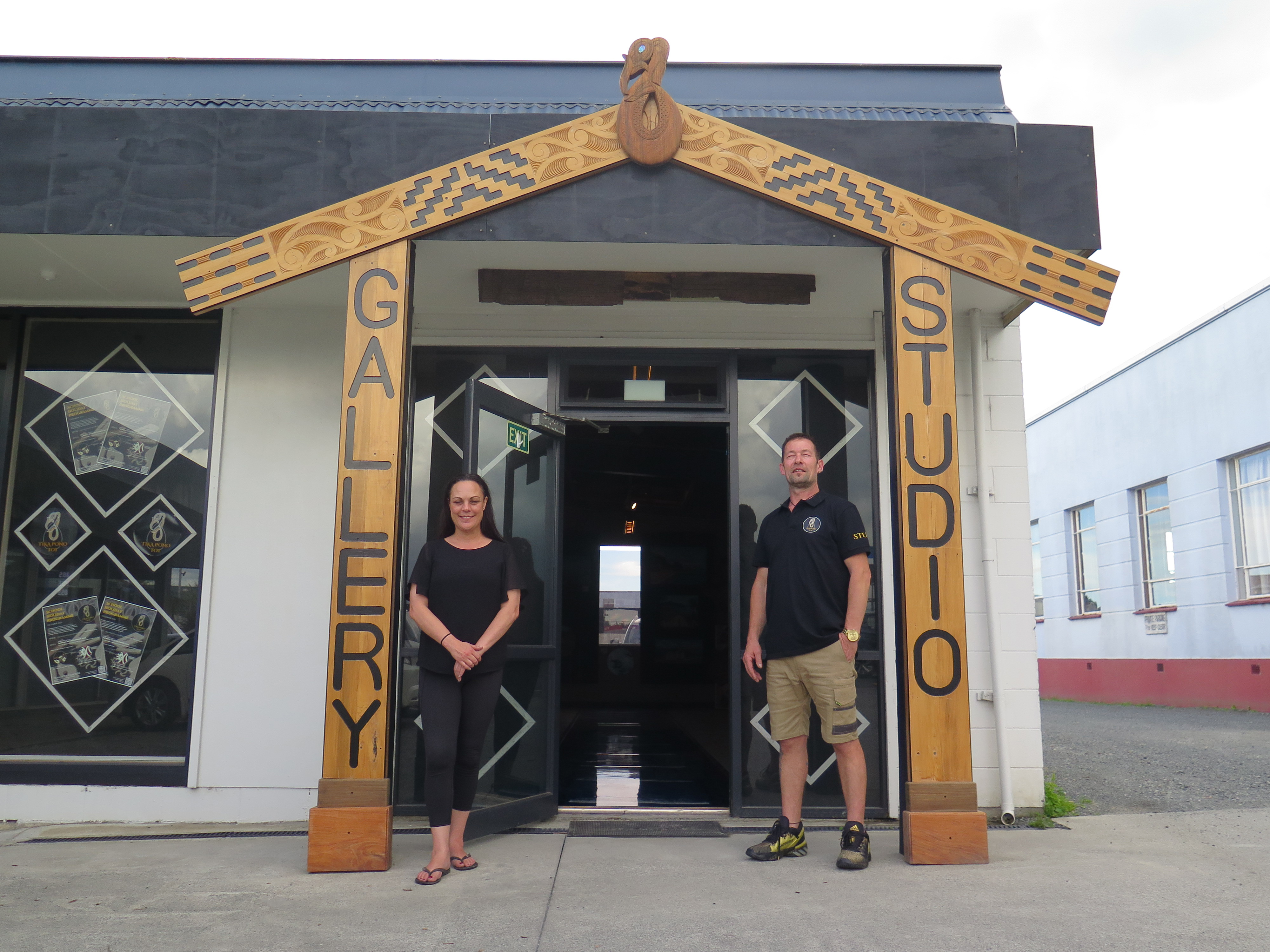 There was a noticeable reduction in incidents in that unit. “They modified their behaviour so they could continue to participate. It significantly reduces tension when you involve arts and culture in a prison environment.”
There was a noticeable reduction in incidents in that unit. “They modified their behaviour so they could continue to participate. It significantly reduces tension when you involve arts and culture in a prison environment.”
However, the positive impact goes far beyond behaviour management. For Leonie, the arts can be a profound turning point in someone’s life. She points to former prisoner Mark Lang, who discovered his identity and artistic talent in Te Tirohanga at Hawke’s Bay Regional Prison.
Now an established whakairo artist, Mark runs his own gallery and supports young people in the community to carve.
“Mark’s a very good example of how connecting in the art space can change someone’s direction,” she says. “He attributes his transformation to his time in Te Tirohanga.”
Listen to a podcast with Mark Lang.
The arts a legitimate and vital complement to rehabilitation
Leonie says the arts are not a soft option: they are a legitimate and vital complement to rehabilitation.
“Rehabilitation is hard,” she says. “When the men attend programmes where they’re delving into trauma, they need a safe space to go to. That’s where the arts come in. It brings them balance, connection and the opportunity to express themselves.”
Safety and security remain paramount in any prison setting, Leonie says, but with the right structures in place, there’s enormous scope for the arts to flourish.
Volunteers are an integral part of programme delivery at Manawatū Prison. Leonie says she is grateful to Arts Access Aotearoa and its Arts in Corrections Advisor, Neil Wallace, for sourcing a volunteer art tutor.
A recent graduate of Neil’s Arts in Corrections Educator Foundation Course, the volunteer will deliver a charcoal-based drawing course. “As a team, we’re excited this is happening,” Leonie says.
Connecting with her heritage
Leonie’s passion for the arts as a rehabilitative tool is also rooted in personal experience. She grew up knowing nothing about her own cultures.
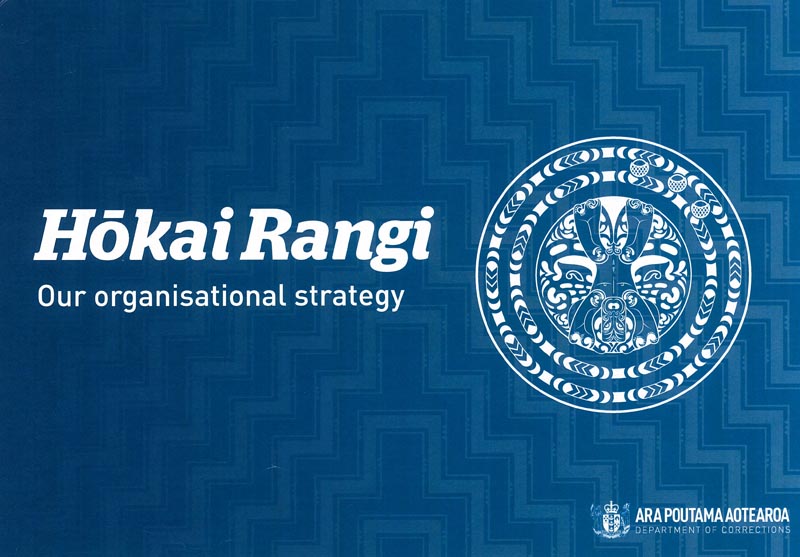 Her parents separated when she was 10-years-old and it wasn’t until her teenage years that she began connecting with her Māori identity. More recently, she learned about her Dutch and German heritage.
Her parents separated when she was 10-years-old and it wasn’t until her teenage years that she began connecting with her Māori identity. More recently, she learned about her Dutch and German heritage.
“I know what it felt like when I made those connections,” she recalls. “It changed my life. And you want everyone to have that feeling of belonging.”
Leonie sees the arts and culture as central to Ara Poutama Aotearoa Department of Corrections and its Hōkai Rangi Strategy, which lists the six pou (pillars) that guide its work. These are: partnership and leadership; humanising and healing; whānau; incorporating a te ao Māori worldview; whakapapa; and foundations for participation.
“The arts are woven through all of these pou.”
LATEST POSTS
- Evaluation shows benefits of arts programmes in prisons
- Art a part of daily life in Hawke’s Bay prison
- Connecting through arts education in prisons
- Creative pathways in our prisons
- We The Young, a festival for children
- Arts and culture a pathway to change
- How music therapy benefits men in prison
- American authority on impact of arts programmes in prisons
- Easy-to-action list to improve your accessibility
- Praise for Arts in Corrections guide

